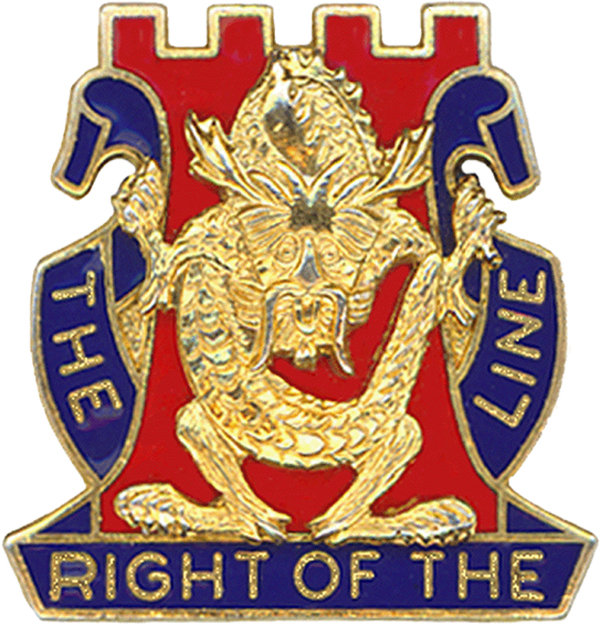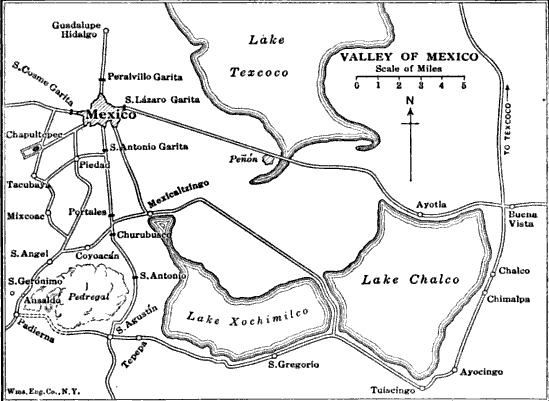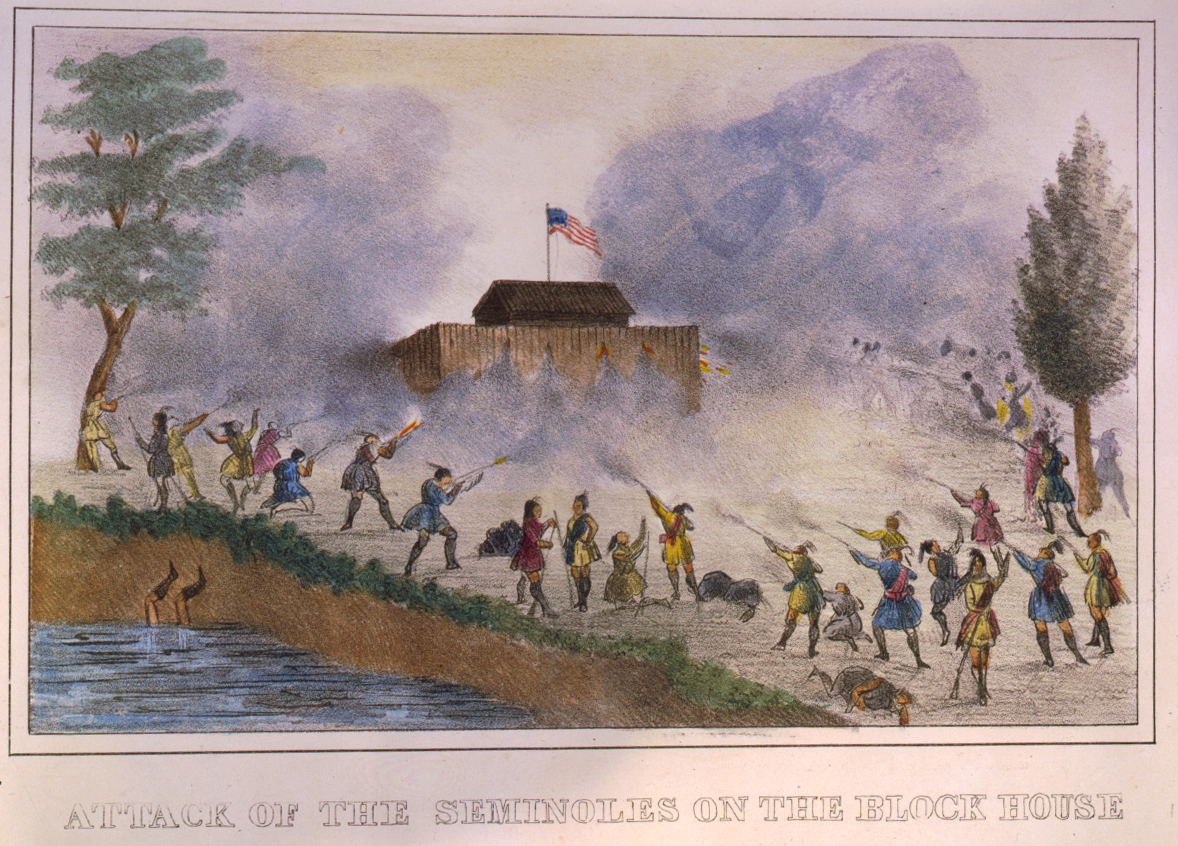|
William Trousdale
William Trousdale (September 23, 1790March 27, 1872) was an American soldier and politician. He served as the 13th governor of Tennessee from 1849 to 1851, and was United States Minister to Brazil from 1853 to 1857. He fought under Andrew Jackson in the Creek War, the War of 1812 and the Second Seminole War, and commanded the U.S. Fourteenth Infantry in the Mexican–American War. His military exploits earned him the nickname, "War Horse of Sumner County." Early life Trousdale was born in Orange County, North Carolina, the son of James and Elizabeth (Dobbins) Trousdale. His father was of Scots-Irish descent, and had served in the Continental Army during the American Revolution. James Trousdale was given a land grant as payment for services in the Revolution, and used this grant to acquire several hundred acres in Sumner County, Tennessee.J. A. Trousdale, "A History of the Life of General William Trousdale," ''Tennessee Historical Magazine'', Vol. 2 (1916), pp. 119-136. The fami ... [...More Info...] [...Related Items...] OR: [Wikipedia] [Google] [Baidu] |
Neill S
Neill is an Irish surname, and may refer to * A. S. Neill (1883-1973), British educator and author * Alec Neill (b.1950), New Zealand politician * Ben Neill (b.1957), American composer * Bob Neill (b.1952), British politician * Bud Neill (1911-1970), Scottish cartoonist * Casey Neill, American musician * Edward Duffield Neill, American minister, author, and educator, secretary to Abraham Lincoln * Fiona Neill, British author and columnist * James C. Neill (c.1788–1848), American soldier and politician * James George Smith Neill (1810-1857), British army general * Jay Wesley Neill (1965-2002), American murderer * John R. Neill (1877-1943), American book illustrator * John W. Neill (b.1934), British hockey player * Lucas Neill (b.1978), Australian soccer player * Noel Neill (1920-2016), American film and television actress * Patrick Neill (other), multiple people * Paul Neill (1882-1968), American electrical engineer * Roy William Neill (1887-1946), Irish-American ... [...More Info...] [...Related Items...] OR: [Wikipedia] [Google] [Baidu] |
14th Infantry Regiment (United States)
The 14th Infantry Regiment ("Golden Dragons" ) is a United States Army light infantry regiment. It has served in the American Civil War, Boxer Rebellion, World War II, Korean War, Vietnam War, Operation Restore Hope, Operation Uphold Democracy, Operation Joint Guard, Operation Desert Storm, Operation Enduring Freedom, Operation Gothic Serpent, Operation New Dawn, Operation Resolute Support, and Operation Iraqi Freedom. The 14th Infantry Regiment did not take part in combat during World War I. It has also conducted peacekeeping and humanitarian missions in the Sinai Peninsula, Guantánamo Bay in Cuba, Bosnia, and Kosovo. Only the 2nd Battalion of the 14th Infantry Regiment is currently active, assigned to 2nd Brigade, 10th Mountain Division at Fort Drum, New York. History Civil War, 1861–66 In May 1861, President Abraham Lincoln called for the creation of nine additional Regular Army infantry regiments in preparation for the looming civil war. These regiments were desi ... [...More Info...] [...Related Items...] OR: [Wikipedia] [Google] [Baidu] |
Battle Of Chapultepec
The Battle of Chapultepec was a battle between American forces and Mexican forces holding the strategically located Chapultepec Castle just outside Mexico City, fought 13 September 1847 during the Mexican–American War. The building, sitting atop a hill, was an important position for the defense of the city. The battle was part of the campaign to take Mexico City, for which General Winfield Scott's U.S. Army totaled 7,200 men. General Antonio López de Santa Anna, known for vicious attacks against Native Mexican American tribes, had formed an army of approximately 25,000 men. Mexican forces, including military cadets of the Military Academy, defended the position at Chapultepec against 2,000 U.S. forces. The Mexicans' loss opened the way for the Americans to take the center of Mexico City. In Mexican history, the battle is cast as the story of the brave deaths of six cadets, the Niños Héroes, who leapt to their deaths rather than be taken captive, with one wrapping himself ... [...More Info...] [...Related Items...] OR: [Wikipedia] [Google] [Baidu] |
Battle Of Molino Del Rey
The Battle of Molino del Rey (8 September 1847) was one of the bloodiest engagements of the Mexican–American War as part of the Battle for Mexico City. It was fought in September 1847 between Mexican forces under General Antonio León against an American force under Major General Winfield Scott at El Molino del Rey on the fringes of Mexico City. The Americans made little progress in this battle, but the Mexican forces were unable to hold them back long enough to prevent the capture of Mexico City one week later. Background The Americans were camped south of Mexico City, Scott and Worth's division at Tacubaya, Gideon Johnson Pillow's division at Mixcoac, David E. Twiggs division at San Ángel, and John A. Quitman's division at San Agustín. On 6 September 1847, Scott ended the armistice following the Battle of Churubusco as negotiations broke down, as it became clear that Antonio López de Santa Anna was preparing to resume fighting.Bauer, K.J., 1974, ''The Mexican War, 18 ... [...More Info...] [...Related Items...] OR: [Wikipedia] [Google] [Baidu] |
Battle Of Churubusco
The Battle of Churubusco took place on August 20, 1847, while Santa Anna's army was in retreat from the Battle of Contreras or Battle of Padierna during the Mexican–American War. It was the battle where the San Patricio Battalion, made up largely of US deserters, made their last stand against U.S. forces. The U.S. Army was victorious, outnumbering more than two-to-one the defending Mexican troops. After the battle, the U.S. Army was only 5 miles (8 km) away from Mexico City. 50 Saint Patrick's Battalion members were officially executed by the U.S. Army, all but two by hanging. Collectively, this was the largest mass execution in United States history. Background Following their defeats at Contreras, Antonio López de Santa Anna ordered Major General Nicolás Bravo Rueda with the Army of the Center, to retreat from San Antonio to Churubusco.Bauer, K.J., 1974, ''The Mexican War, 1846-1848'', New York:Macmillan, Santa Anna also ordered Major General Manuel Rincón to ... [...More Info...] [...Related Items...] OR: [Wikipedia] [Google] [Baidu] |
Battle Of Contreras
The Battle of Contreras, also known as the Battle of Padierna, took place on 19–20 August 1847, in one of the final encounters of the Mexican–American War, as invading U.S. forces under Winfield Scott approached the Mexican capital. American forces surprised and then routed the Mexican forces of General Gabriel Valencia, who had disobeyed General Antonio López de Santa Anna's orders for his forces' placement. Although the battle was an overwhelming victory for U.S. forces, there are few depictions of it in contemporary popular prints. The armies re-engaged the next day in the Battle of Churubusco. Background General Gabriel Valencia's army of the north was part of the forces that fought at the Battle of Buena Vista in February 1847, in which Santa Anna retreated before giving a crushing blow to the forces of Zachary Taylor. The Mexican forces were then divided in two, with one sent to Cerro Gordo and the other to San Luis Potosí. General Valencia was given the command of ... [...More Info...] [...Related Items...] OR: [Wikipedia] [Google] [Baidu] |
Mexican–American War
The Mexican–American War, also known in the United States as the Mexican War and in Mexico as the (''United States intervention in Mexico''), was an armed conflict between the United States and Mexico from 1846 to 1848. It followed the 1845 American annexation of Texas, which Mexico still considered its territory. Mexico refused to recognize the Velasco treaty, because it was signed by President Antonio López de Santa Anna while he was captured by the Texan Army during the 1836 Texas Revolution. The Republic of Texas was ''de facto'' an independent country, but most of its Anglo-American citizens wanted to be annexed by the United States. Sectional politics over slavery in the United States were preventing annexation because Texas would have been admitted as a slave state, upsetting the balance of power between Northern free states and Southern slave states. In the 1844 United States presidential election, Democrat James K. Polk was elected on a platform of expand ... [...More Info...] [...Related Items...] OR: [Wikipedia] [Google] [Baidu] |
Battle Of Wahoo Swamp
The Battle of Wahoo Swamp was an extended military engagement of the Second Seminole War fought in November 1836 in the Wahoo Swamp, approximately 50 miles northeast of Fort Brooke in Tampa and 35 miles south of Fort King in Ocala in modern Sumter County, Florida. General Richard K. Call, the territorial governor of Florida, led a mixed force consisting of Florida militia, Tennessee volunteers, Creek mercenaries, and some troops of the US Army and Marines against Seminole forces led by chiefs Osuchee and Yaholooche. Soon after hostilities began in late 1835, a portion of the Seminole and Black Seminole of north and central Florida removed to the Wahoo Swamp - a largely unmapped wilderness of wetlands, dense hardwood hammocks, and scattered wet prairies - as a refuge from attempts to expel them from the territory as demanded by the Indian Removal Act. Settlements were established on patches of dry land along the Withlacoochee River, and the area became a base from which sma ... [...More Info...] [...Related Items...] OR: [Wikipedia] [Google] [Baidu] |
Second Seminole War
The Second Seminole War, also known as the Florida War, was a conflict from 1835 to 1842 in Florida between the United States and groups collectively known as Seminoles, consisting of Native Americans in the United States, Native Americans and Black Indians in the United States, Black Indians. It was part of a series of conflicts called the Seminole Wars. The Second Seminole War, often referred to as ''the'' Seminole War, is regarded as "the longest and most costly of the American Indian Wars, Indian conflicts of the United States". After the Treaty of Payne's Landing in 1832 that called for the Seminole's removal from Florida, tensions rose until open hostilities started with Dade battle. For the next four years, the Seminole and the U.S. forces engaged in small engagements and by 1842 only a few hundred native peoples remained in Florida. The war was declared over on August 14, 1842. Background Bands from various tribes in the southeastern United States had moved into the uno ... [...More Info...] [...Related Items...] OR: [Wikipedia] [Google] [Baidu] |
Battle Of New Orleans
The Battle of New Orleans was fought on January 8, 1815 between the British Army under Major General Sir Edward Pakenham and the United States Army under Brevet Major General Andrew Jackson, roughly 5 miles (8 km) southeast of the French Quarter of New Orleans, in the current suburb of Chalmette, Louisiana. The battle was the climax of the five-month Gulf Campaign (September 1814 to February 1815) by Britain to try to take New Orleans, West Florida, and possibly Louisiana Territory which began at the First Battle of Fort Bowyer. Britain started the New Orleans campaign on December 14, 1814, at the Battle of Lake Borgne and numerous skirmishes and artillery duels happened in the weeks leading up to the final battle. The battle took place 15 days after the signing of the Treaty of Ghent, which formally ended the War of 1812, on December 24, 1814, though it would not be ratified by the United States (and therefore did not take effect) until February 16, 1815, as news of ... [...More Info...] [...Related Items...] OR: [Wikipedia] [Google] [Baidu] |
Battle Of Pensacola (1814)
The Battle of Pensacola (7-9 November 1814) was a battle of the Creek War during the War of 1812, in which American forces fought against forces from the kingdoms of Britain and Spain who were aided by the Creek Indians and African-American slaves allied with the British. General Andrew Jackson led his infantry against British and Spanish forces controlling the city of Pensacola in Spanish Florida. Allied forces abandoned the city, and the remaining Spanish forces surrendered to Jackson. The battle was the only engagement of the war to take place within the sovereignty of the Kingdom of Spain, which was angered by the rapid withdrawal of British forces. Britain's naval squadron of five warships also withdrew from the city. Background Horseshoe Bend Many refugees fled to Spanish West Florida after the Red Stick Creeks were defeated at the Battle of Horseshoe Bend. The presence of the Creek refugees had motivated British Brevet Captain George Woodbine of the Royal Marines to tra ... [...More Info...] [...Related Items...] OR: [Wikipedia] [Google] [Baidu] |
War Of 1812
The War of 1812 (18 June 1812 – 17 February 1815) was fought by the United States of America and its indigenous allies against the United Kingdom and its allies in British North America, with limited participation by Spain in Florida. It began when the United States declared war on 18 June 1812 and, although peace terms were agreed upon in the December 1814 Treaty of Ghent, did not officially end until the peace treaty was ratified by Congress on 17 February 1815. Tensions originated in long-standing differences over territorial expansion in North America and British support for Native American tribes who opposed US colonial settlement in the Northwest Territory. These escalated in 1807 after the Royal Navy began enforcing tighter restrictions on American trade with France and press-ganged men they claimed as British subjects, even those with American citizenship certificates. Opinion in the US was split on how to respond, and although majorities in both the House and ... [...More Info...] [...Related Items...] OR: [Wikipedia] [Google] [Baidu] |










